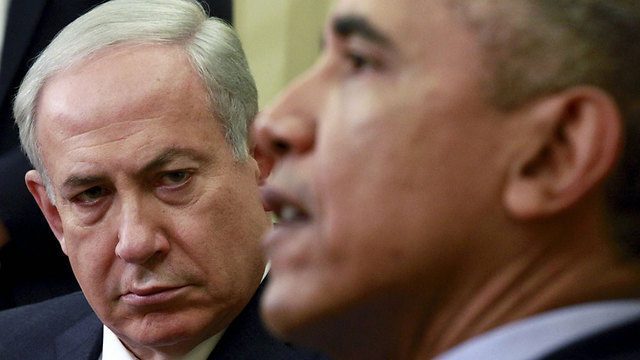
Since Hamas’ attack, Israel has pushed dozens of online ads, including graphic videos, to millions of people to drum up support for its war on Gaza.
Since the 7 October attack by Hamas on Israeli settlements in the vicinity of Gaza, that has been blockaded by Israel for 16 years, the Israeli government has started a sweeping social media campaign in key Western countries to drum up support for its exaggerated retaliation against the Palestinian movement.
Part of its strategy: pushing dozens of ads containing brutal and emotional imagery of alleged violence in Israel across platforms such as X, formerly known as Twitter, and YouTube, according to data reviewed by Politico, an American news website.
For example, a photo with a bloody dead baby whose face is blurred was circulating on X for days. “This is the most difficult image we’ve ever posted. As we are writing this, we are shaking,” the accompanying message says.
The footage is a paid message from the Israeli Foreign Affairs Ministry, for propaganda in favor of its narrative of the war, while covering up the atrocities resulting from its bombardment of Gaza, killing thousands, mostly children, women and elderly people.
Israel’s attempt to win the online information war is part of a growing trend of governments around the world moving aggressively online in order to shape their image, especially during times of crisis. PR campaigns in and around wars are nothing new. But paying for online advertising targeted at specific countries and demographics is now one of governments’ main tools to get their messages in front of more eyeballs.
More than 2 million Palestinians trapped in Gaza have been subjected to worsening conditions ahead of an expected upcoming offensive, and Western leaders are shyly calling on the Israeli government to exercise restraint and respect humanitarian law.
In a little over a week, Israel’s Foreign Affairs Ministry has run 30 ads that have been seen over 4 million times on X, according to the platform’s data. The paid videos and photos that started appearing on October 12 were aimed at adults over 25 in Brussels, Paris, Munich and The Hague, according to the same data.
The ads portrayed Hamas as a “vicious terrorist group,” similar to the Islamic State, calling on the world to defeat it as it did with ISIS.
Over on YouTube, the Israeli Foreign Affairs Ministry has released over 75 different ads, including some that are particularly graphic. They have been directed at viewers in Western countries — including France, Germany, the U.S. and the U.K. — and have aired between the initial Hamas attack on October 7 and Monday, according to Google’s transparency database.
Israel has largely targeted Europe with its narrative to win over support. Nearly 50 video ads in English were directed to EU countries, while viewers in the U.S. and the U.K. were pushed 10 and 13 ads, respectively. One of the videos had been seen over 3 million times as of Tuesday afternoon European time.
Platforms’ ongoing content challenge
The ad campaign has posed some challenges to social media companies, which have set standards for what type of content can be posted on their streams.
Google, for example, removed about 30 ads containing violent images from its public library after POLITICO reached out for a comment on Monday — meaning there is no public record that such ads ran for several days on YouTube. The company said it didn’t allow ads containing violent language, gruesome or disgusting imagery, or graphic images or accounts of physical trauma. (Some of the graphic videos are still available on the Israeli Foreign Affairs Ministry’s YouTube channel with some warnings.)
X did not respond to a request for comment. The tech company is currently being investigated by the European Commission over whether its handling of illegal content and disinformation connected to the Hamas attack has respected the EU’s content-moderation law, the Digital Services Act (DSA).
Under the DSA, companies have to swiftly remove illegal content, including terrorist propaganda, and limit the spread of falsehoods — or else face sweeping fines of up to 6 percent of their global annual revenue.
No similar ads were running on Meta’s Instagram and Facebook, LinkedIn and TikTok, according to the platforms’ public ad libraries as of Monday.
Some of the ads online have been met with some pushback by viewers who have sought ways to stop being targeted by the foreign ministry. But experts in the field say that this is simply the new reality of PR campaigns built around wars.
“This tactic is almost as old as war … Stirring moral outrage to build support for war is a very old practice,” said Emerson Brooking, a senior fellow at the Atlantic Council. “But I do not think it has collided with social media in quite this way before.”
Still, amid an onslaught of disinformation and illegal content connected to the attacks, Israel’s online push may prove more complicated. The European commissioner in charge of enforcing the DSA, Thierry Breton, has warned some online platforms to step up their efforts to protect young viewers from harmful content. The EU also reminded Google’s CEO Sundar Pichai last week to be “very vigilant” to ensure that YouTube respects the DSA.
As Israel amps up its war online, its army’s destructive airstrikes have damaged Gaza’s telecommunications infrastructure, leaving millions on the verge of a total network blackout.
“It is difficult to imagine a robust counter-messaging effort by pro-Palestinian groups which could make use of the same advertising medium,” Brooking said.
“It’s one part of the social media battlefield in which Israel has a real advantage.”



